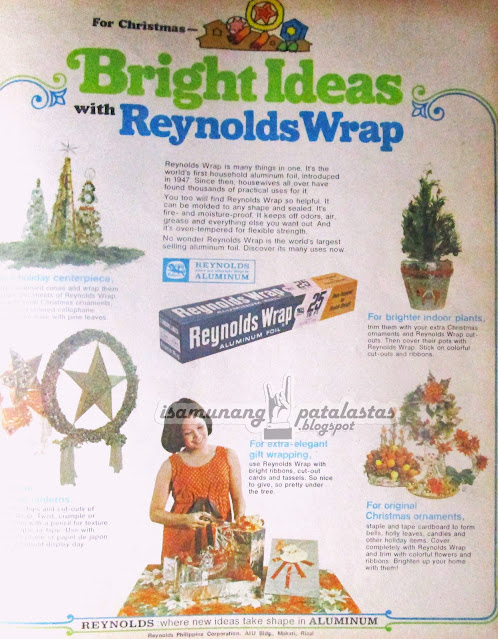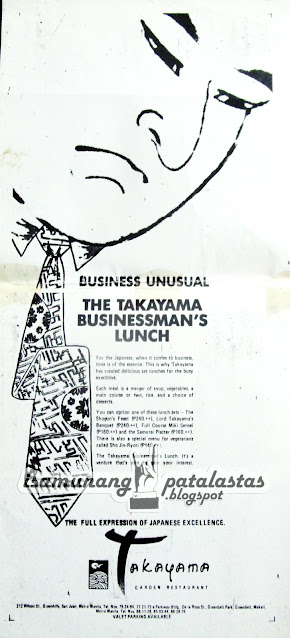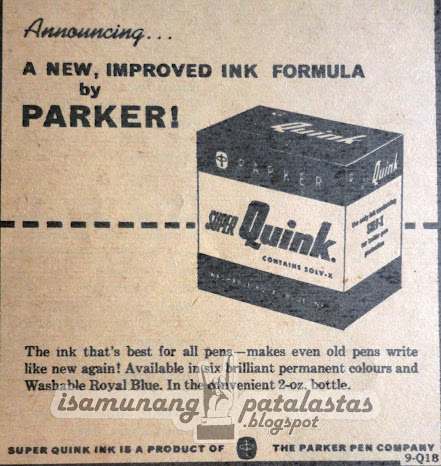 |
| TEEN STARS OF THE 60s, BERT LEROY JR. & LIBERTY ILAGAN, FOR COKE, 1963 |
COCA-COLA has been using local movie stars as endorsers
and models of print ads as early as the late 1950s. Early models included
Gloria Romero, Juancho Gutierrez and Fred Montilla.
In the 60s, local film studios began building up their
own stable of artists, and Sampaguita Pictures was the most successful, securing
for its stars lucrative commercial endorsements for Coke. Many appeared in Coke’s
50th anniversary ads and in subsequent ads of the 60s like Eddie
Gutierrez, Josephine Estrada and Jean Lopez.
These ads from 1963 show two popular Sampaguita teen
stars of the decade: BERT LEROY Jr. and
LIBERTY ILAGAN.
 |
| BERT AND LIBERTY, part of the COKE ad series, 1963 |
Bert Leroy Jr. was born as Albert Leroy (25 Apr. 1944,
Manila), one of 3 children of showbiz couple Nicanor (Bert) Leroy Sr. and radio
personality Luz Mat. Castro. It was natural that he was introduced to films
early, appearing at age 9 in “Diwang Kayumanggi”. He put his budding film
career on hold to concentrate on his grade school in Sta. Rita Colleges where
he was an honor student, and took up high school at San Beda, where he was an
honor student.
Bert enrolled at the University of Santo Tomas to take up
Commerce but only stayed for a year. It was said he re-entered showbiz in 1961, and, as he says "so I could buy my own car". The 18 year old was introduced in 1962 in a
supporting role in “Tugtuging Bukid”. There must have been an attempt to cast
him with Liberty Ilagan as a love team in these Coke ads from 1963, but in
1966, Bert found bigger fame when he was teamed up as Gina Pareño’s partner as
part of the popular teen group of Sampaguita Pictures’ “Stars ‘66”. One
highlight of his career is earning a FAMAS nomination as Best Actor in the 1967
drama, “Kung Bakit Pa Ako Isinilang”.
 |
| LIBERTY ILAGAN, solo ad for Coke, 1963 |
LIBERTY ILAGAN ,
on the other hand was born (6 Jul. 1943) was born to showbiz royalty; her
father is National Artist and actor-director Gerry de Leon, famed for his nationalistic
films like “Sisa”, “Diego Silang” and screen adaptations of “Noli Me Tangere,” “El Filibusterismo,” “Diego
Silang,” and “Sisa.” Her mother, Fely Vallejo, was an actress, sister of 1930s violin
prodigy, Ernesto Vallejo.
Like Bert, Liberty started as a 3 year old child actress,
appearing in “Isumpa Mo Giliw”in 1946. She stopped to take up pre-Law at Arellano
University. But she was lured back to showbiz in her teens by Sampaguita and did
many teen flicks like “Joey, Eddie, and Lito” (1961) , “The Big Broadcast”
(1962), “Sweet Valentines” (1963) and “Jukebox Jamboree” (1964).
Eventually, she married Rod Ongpauco, an ex-actor who
became a successful restaurateur (founder of Barrio Fiesta) , with whom she had
3 kids: Happy, Love and Soeng Ongpauco.
Both Sampaguita stars Bert and Liberty migrated to the U.S.
after their fruitful showbiz careers. Bert Leroy Jr., , now 80 years old, is marred with
2 sons and a daughter. Liberty, who had separated with Rod, remarried a U.S.
lawyer, Carlos Lardizabal, and passed away on 17 Mar. 2020.
SOURCES:
Information about B. Leroy Jr. and L. Ilagan: Wikipedia
The Movie Database: https://www.themoviedb.org/person/1355492-bert-leroy-jr
Rappler: Former
Sampaguita actress dies at 76 https://www.rappler.com/entertainment/254920-actress-liberty-ilagan-dies/
Phil. Daily Inquirer: https://entertainment.inquirer.net/189427/stars-66-50-golden-years-later



















































